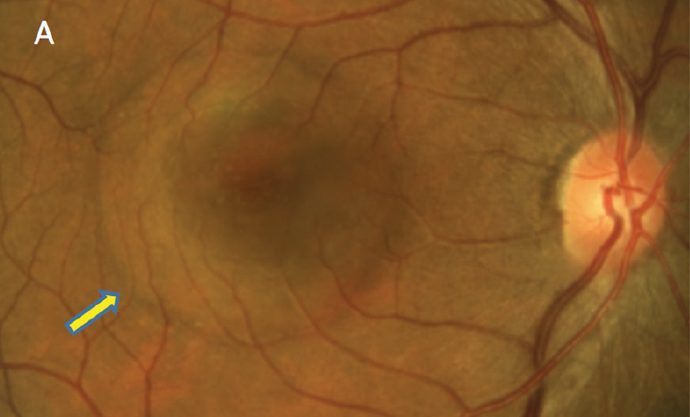 |
| Scleral thickness could have implications in the pathogenesis of central serous chorioretinopathy. Photo: Mohammad Rafieetary, OD. Click image to enlarge. |
Seeking to better understand the role of the sclera in the pathogenesis of central serous chorioretinopathy, a team of researchers recently conducted a retrospective analysis evaluating regional scleral thickness as a potential risk factor for the condition.
The study included 79 eyes of 40 patients with central serous chorioretinopathy and 46 eyes of 23 patients in the control group. Using an ultrasound unit and enhanced-depth imaging OCT, researchers measured the scleral thickness at the equator and posterior pole. This data was then evaluated to look for associations.
The study authors reported a mean subfoveal scleral thickness of 1.30mm among patients with central serous chorioretinopathy compared with 0.86mm in the control group. Additionally, they observed a mean equatorial scleral thickness of 0.61mm in the central serous chorioretinopathy group and 0.42mm for the control group.
Generalized estimating equations revealed that the equatorial scleral thickness, posterior scleral thickness and subfoveal choroidal thickness were independent predictors of central serous chorioretinopathy. However, the researchers found that sex and age were not. Additionally, the analysis showed that equatorial—but not posterior—scleral thickness was a significant predictor of subfoveal choroidal thickness.
“The role that the sclera plays in the pathogenesis of central serous chorioretinopathy is speculative, but is supported by data presented in this study, which fits the theoretical framework of venous overload choroidopathy,” the study authors stated. They noted the need for further prospective study.
“Research ideas that may help flesh out the connection could include evaluation of patients being treated with chronic corticosteroids, even assessing diseases that may be associated with choroidal vascular hyperpermeability and central serous chorioretinopathy, such as polypoidal choroidal vasculopathy,” they concluded. “It may be possible to conceive of treatments for central serous chorioretinopathy that target the sclera.”
Spaide RF, Fisher YL, Ngo WK, et al. Regional scleral thickness as a risk factor for central serous chorioretinopathy. Retina. March 25, 2022. [Epub ahead of print]. |

